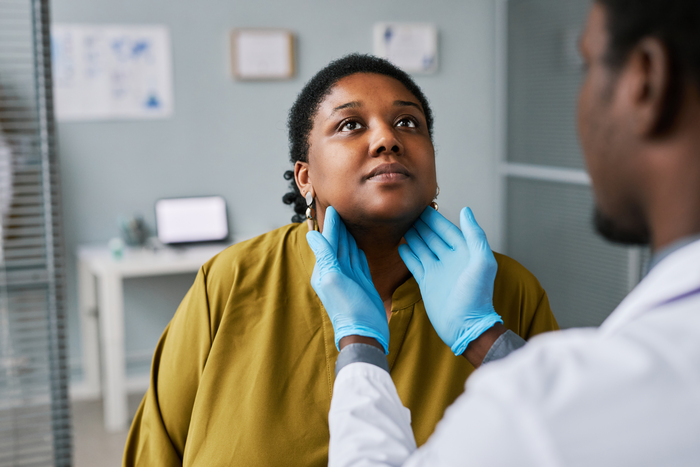
Feel better faster. Get care today.
From the clinic or your couch. Find high quality, same-day urgent care for you and your kids. Book an urgent care visit today.

Waking up with a sore throat can be annoying, but how do you know if it’s just a passing irritation or something more serious, like strep throat? While viruses often cause sore throats that clear up on their own, strep throat is a bacterial infection that requires antibiotics to heal properly and prevent complications. Left untreated, it can lead to more serious health issues like rheumatic fever or kidney problems, and it’s highly contagious. That’s why getting the right diagnosis matters.
Urgent care clinics are one of the fastest and most convenient places to get checked for strep. With rapid strep tests available on-site, you can get swabbed, diagnosed, and treated in a single visit—often without the need for an appointment. Whether your symptoms are just starting or getting worse, urgent care takes the guesswork out of sore throat season and helps you feel better, faster.
Strep throat is a bacterial infection caused by Group A Streptococcus, a type of bacteria that targets the throat and tonsils. Unlike viral sore throats, strep throat typically comes on suddenly and can cause intense pain, redness, and swelling in the throat, often accompanied by fever and swollen lymph nodes. It spreads easily through respiratory droplets, meaning coughing, sneezing, or even sharing drinks or utensils with an infected person can pass it along. This makes it especially common in close-contact settings, such as schools, daycares, and households.
Quick diagnosis and treatment are important not only for symptom relief but also to prevent serious complications, according to MedlinePlus. They explain that when treated early with antibiotics, strep symptoms usually improve within a day or two, and the risk of spreading it to others drops significantly. More importantly, fast treatment helps prevent rare but serious complications, such as rheumatic fever, which can affect the heart, or post-streptococcal glomerulonephritis, a kidney issue that can develop after infection.
For children under 3, sore throats are more commonly caused by viruses, not strep. Because of this, routine strep testing is not typically recommended unless specifically advised by a healthcare provider. If your child under 3 has a persistent fever, trouble swallowing, decreased appetite, or seems unusually fatigued or irritable, it’s best to consult a pediatrician. They can help determine whether further testing or treatment is needed based on your child’s symptoms and overall health.
It’s easy to assume all sore throats are the same, but there are key differences between a viral sore throat and strep throat. Recognizing the symptoms can help you decide when it’s time to get tested, especially during cold and flu season.
Typical strep throat symptoms:
Viral sore throat signs:
It’s nearly impossible to tell the difference between strep and a viral sore throat just by symptoms alone. That’s why a throat swab is essential—without it, you risk delaying treatment or taking antibiotics unnecessarily, according to MedlinePlus. A quick test at urgent care can give you answers in minutes.
If you’re experiencing severe throat pain along with a fever, MedlinePlus recommends considering a visit to urgent care. Other red flags that suggest strep throat include:
Urgent care clinics are equipped to diagnose and treat strep throat quickly. Providers there can perform a rapid antigen strep test by swabbing the back of your throat, which delivers results in just 5 to 10 minutes. If the rapid test is negative but clinical suspicion remains high, they may also send a throat culture to a lab for confirmation.
If the test is positive, treatment typically starts right away with a course of antibiotics to reduce symptoms, lower the risk of complications, and prevent the spread to others. With same-day appointments and fast results, urgent care makes it easy to get answers and relief without a long wait.
When you arrive at urgent care for a possible strep throat, your visit will begin with a brief intake and discussion of your symptoms. The provider will review your health history, ask about your symptom timeline, and note any key indicators—like fever, throat pain, or lack of congestion—that might suggest a bacterial infection. They’ll also perform a physical exam, often checking your throat, tonsils, and lymph nodes for swelling, redness, or white patches.
Typically, urgent care providers also perform a throat swab. This is a quick and mildly uncomfortable procedure where a cotton swab is gently rubbed against the back of your throat and tonsils to collect a sample. The rapid strep test can return results within 5 to 10 minutes. If the test is positive, the provider will prescribe antibiotics, often starting treatment immediately. In some cases, especially for children or when symptoms strongly suggest strep despite a negative rapid test, a second swab may be sent to a lab for a throat culture. These results typically take 24 to 48 hours and provide a more definitive diagnosis. Your urgent care provider will let you know if additional follow-up is needed based on those results.
Strep throat is treated with antibiotics, most commonly penicillin or amoxicillin, which are effective at clearing the infection and preventing complications, according to the CDC. These medications typically begin working quickly; most people are no longer contagious within 24 hours of starting treatment. The standard course lasts about 10 days, and it’s important to complete the full regimen even if you start feeling better sooner to ensure the bacteria are fully eliminated.
In addition to antibiotics, supportive care at home can help ease symptoms and speed up recovery:
Most people feel significantly better within a few days of starting treatment, according to the CDC.
While most cases of strep throat resolve quickly with antibiotics, there are situations where additional care is needed, according to the CDCL
Think you might have strep throat? Don’t wait it out—book a rapid strep test at a nearby urgent care center through Solv. With same-day availability and quick results in just minutes, you can get diagnosed and start treatment fast. Solv makes it easy to find local clinics, check wait times, and reserve your spot online—so you can skip the line and get back to feeling better, sooner.
Yes, urgent care clinics are equipped to diagnose and treat strep throat. They offer rapid strep tests and can provide treatment, often in a single visit without the need for an appointment.
Symptoms of strep throat typically include sudden sore throat with pain when swallowing, a fever over 101°F, swollen lymph nodes in the neck, white patches or streaks of pus on the tonsils, and absence of a cough or runny nose.
Strep throat is diagnosed through a throat swab. The swab is tested on-site using a rapid strep test that can return results within 5 to 10 minutes. If the rapid test is negative but there is still a high suspicion of strep throat, the swab may be sent to a lab for further testing.
Strep throat is treated with antibiotics, most commonly penicillin or amoxicillin. These medications are effective at clearing the infection and preventing complications. In addition to antibiotics, supportive care at home such as over-the-counter pain relievers, gargling with warm salt water, staying well-hydrated and getting plenty of rest can help ease symptoms and speed up recovery.
You should seek further care if your symptoms worsen or fail to improve after 48 hours of starting treatment, or if you develop new symptoms such as a rash, joint pain, or swelling. Frequent strep throat infections may also require a referral to a specialist for long-term management options.

From the clinic or your couch. Find high quality, same-day urgent care for you and your kids. Book an urgent care visit today.